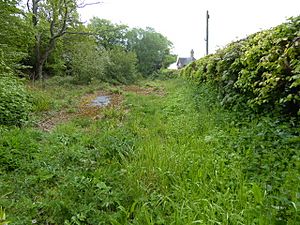Turners Hill SSSI facts for kids
| Site of Special Scientific Interest | |
 |
|
| Area of Search | West Sussex |
|---|---|
| Interest | Geological |
| Area | 0.2 hectares (0.49 acres) |
| Notification | 1999 |
| Location map | Magic Map |
Turners Hill SSSI is a special place in Turners Hill, West Sussex, covering about 0.2-hectare (0.49-acre). It's known for its interesting rocks and is called a Site of Special Scientific Interest (SSSI) because of its unique geology. This means it's a protected area where scientists can study Earth's history. It's also part of the Geological Conservation Review, which lists the most important geological sites in Great Britain.
Contents
What Makes Turners Hill SSSI Special?
Turners Hill SSSI was once a quarry, which is a large pit dug into the ground to get out stone or sand. This particular quarry was important because it showed rocks from a very old time in Earth's history.
Rocks from the Early Cretaceous Period
The rocks found here are part of something called the Tunbridge Wells Sand Formation. This formation is also part of the larger Hastings Beds. These rocks were formed during the Early Cretaceous period, which was a long, long time ago – between about 140 and 100 million years ago! To give you an idea, this was when dinosaurs like the Iguanodon were roaming the Earth.
The Ardingly Sandstone
Inside the Tunbridge Wells Sand Formation, there's a special layer of rock called the Ardingly Sandstone Member. The quarry at Turners Hill was great for seeing this sandstone because it showed it in "three-dimensional sections." This means you could see the layers of rock from different angles, like looking at a slice of cake from the top, side, and front. This helped scientists understand how these ancient sands were laid down and changed over millions of years.
Access to the Site
Today, Turners Hill SSSI is on private land, so people cannot visit it. The old quarry has been filled in, which means you can no longer see the interesting rock layers that were once exposed there. Even though the geology isn't visible anymore, the site remains important for its past scientific discoveries.

